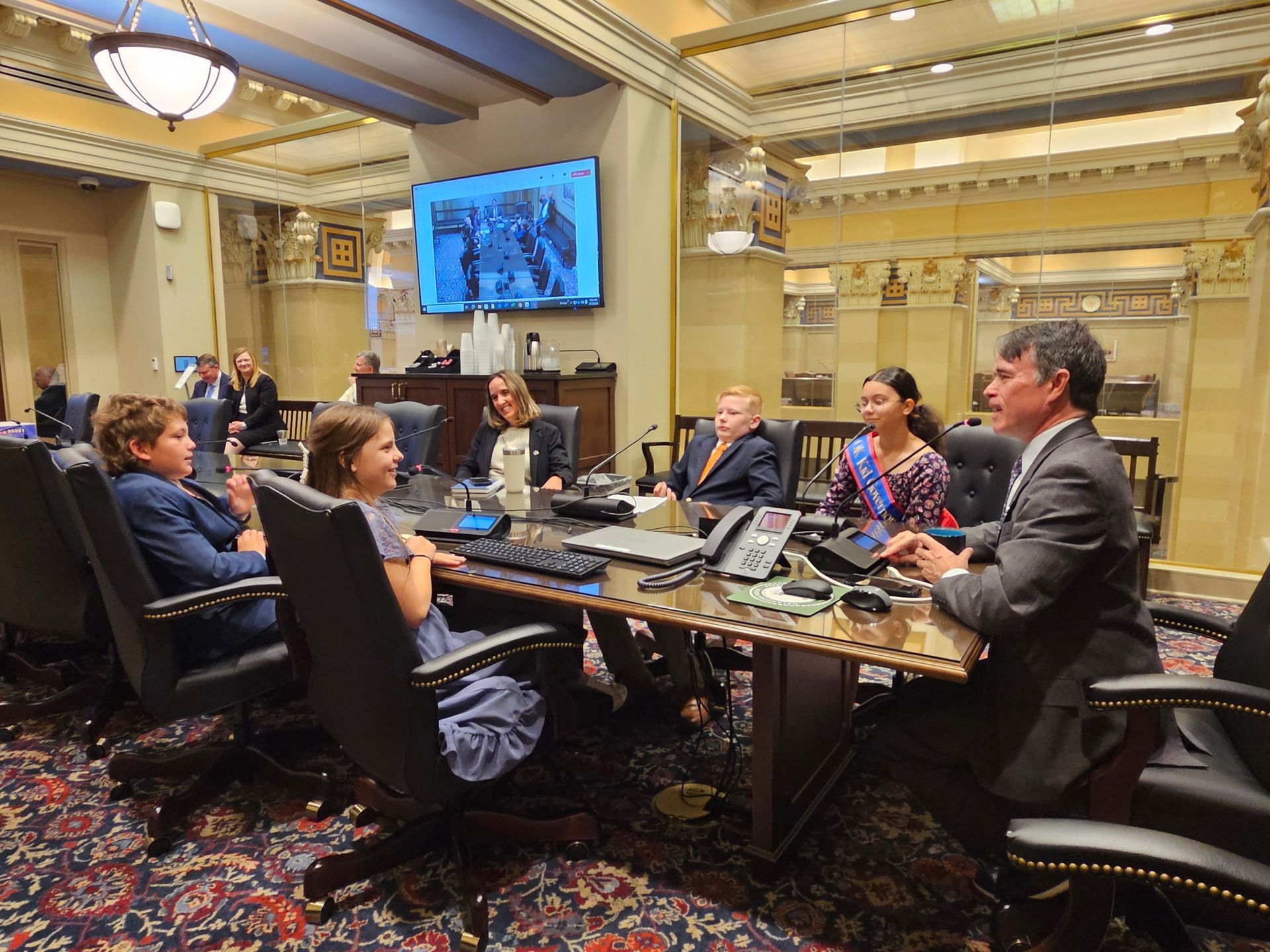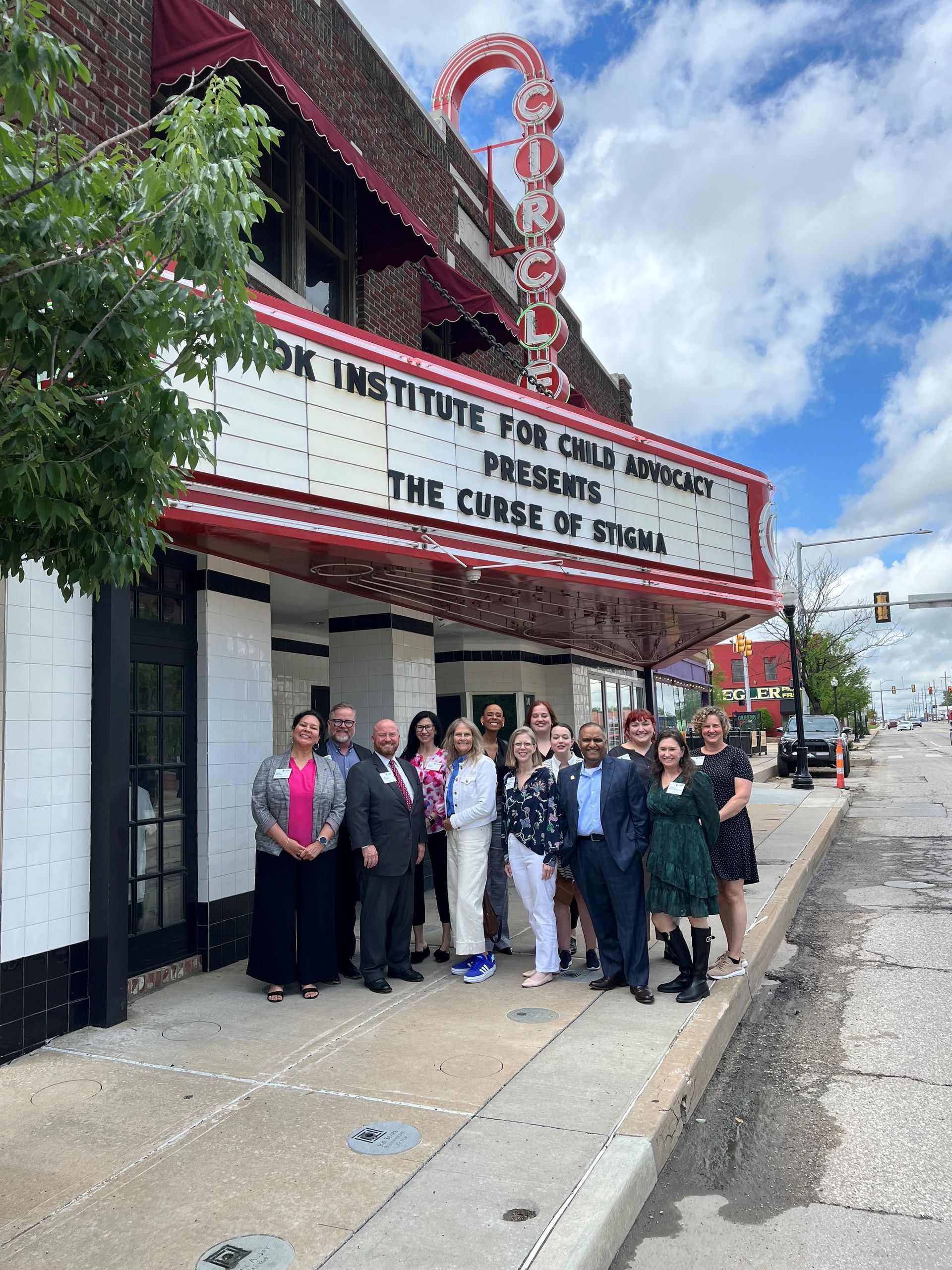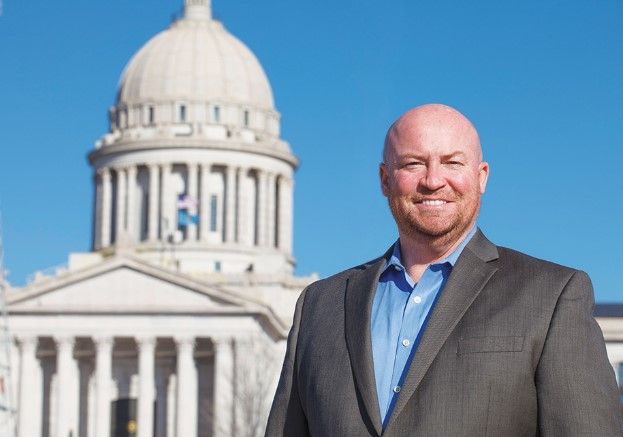OICA Leads Two Initiatives to Educate Oklahomans about Advocacy

STATE REP. JOHN WALDRON (right), D-Tulsa, listens to Oklahoma’s Kid Governor® Emma Stephens (second from right with sash), during a Kid Governor® visit to the State Capitol. Waldron, along with state Rep. Ellen Pogemiller, D-OKC, hosted the visit to share insight into state government and to listen to the Kid Governor® and her cabinet. Joining Kid Governor® Stephens were Kid Lt. Gov. Shawn Ferrell, Kid Secretary of State Lawson Ream, and Kid Cabinet Member Clayton Rohla, as well as Oklahoma State Department of Education personnel who also took time to visit with the young leaders.

MEMBERS OF THE FIRST CLASS OF THE OKLAHOMA INSTITUTE FOR CHILD ADVOCACY’S (OICA) ADVOCACY BOOT CAMP (ABC) pose under the marquee at Circle Cinema following the presentation of The Curse of Stigma, which was the second entry in OICA Tulsa Movie Series and was made possible by generous grants from the George Kaiser Family Foundation and the Whitten-Newman Foundation. ABC is an intensive leadership training cohort designed to train the next generation of child advocates in Oklahoma. Applications for Class II are being accepted at https://www.oica.org/abc
Over the past week, the Oklahoma Institute for Child Advocacy (OICA) has not only been busy with promoting youth-related policies at the state and federal capitols, but we have also led two important programs under our mission.
Our Advocacy Boot Camp (ABC) visited Tulsa over three days and learned about many wonderful programs in the area which serve youth. Ranging from the Educare program for early childhood education to CREOKS, a mental health provider serving those in need of support, the wide array of services available was amazing to see.
We also were able to tour Greenwood Rising, the museum dedicated to learning about the 1921 Tulsa Race Massacre, and we hosted a screening of the documentary “The Curse of Stigma” that was followed by a panel consisting of health and media professionals to discuss ways to increase awareness about seizures and epilepsy. Thank you to the George Kaiser Family Foundation and the Whitten-Newman Foundation for making this experience possible.
The Advocacy Boot Camp is a leadership cohort that meets seven times from September to September and visits different locations around Oklahoma to learn about the advocacy efforts occurring in those communities with the hope of building partnerships and better understanding of how to engage in policy to better lives. Applications are currently open for the upcoming class, and you can go to https://www.oica.org/abc to apply for Class II.
OICA also hosted four of our current Kid Governor® Cabinet at the Oklahoma State Capitol to meet with lawmakers in support of public education initiatives. The program was hosted by Rep. John Waldron, D-Tulsa and Rep. Ellen Pogemiller, D-Oklahoma City.
We appreciate the four students who were able to attend, including Kid Governor Emma Stevens, Kid Lieutenant Governor Shawn Ferrell, Kid Secretary of State Lawson Ream and Kid Cabinet Member Clayton Rohla. Special thanks go out to the lawmakers and the Oklahoma State Department of Education personnel who took time to visit with these young leaders.
OICA is taking reservations for the upcoming school year for classrooms to sign up for the program with curriculum designed for 5th grade classrooms. If you are a 5th grade teacher, please reach out to us at https://tinyurl.com/KG25-26Teachers to pre-register. If you are a parent of a soon-to-be 5th grader, please ask your teacher or the elementary school administration about inquiring about how to be involved.
I also want to extend thanks to the many people who were involved in seeing Senate Bill 364 become law in Oklahoma. This is the legislation which would ban the use of corporal punishment on students who fall under the guidelines of the federal Individuals with Disabilities Education Act (IDEA).
Due to the hard work of Sen. Dave Rader, R-Tulsa and House Speaker Pro Tempore Anthony Moore, R-Clinton, this bill received a majority of votes in each legislative body. Gov. Kevin Stitt chose to allow this bill to become law without his signature.
This is a fairly unusual process commonly called “Pocket Passage.” It allows for any legislation to become law without the governor’s signature so long as the Legislature is in session. It is very similar to the “Pocket Veto” which occurs if the governor does not sign a bill and the Legislature has adjourned for the year. The Constitution says that such bill will not become law.
It was a great effort over three years to see this legislation achieve success. Thank you also to the original authors of the bill, Rep. John Talley, R-Stillwater and Sen. Kay Floyd, D-Oklahoma City, who worked on this in the previous two legislative sessions.
None of this would have been possible without the more than 20 organizations statewide who led the awareness campaign to educate lawmakers and other Oklahomans about this practice that still happens in more than 60 school districts. The bill will take effect in late 2025.











